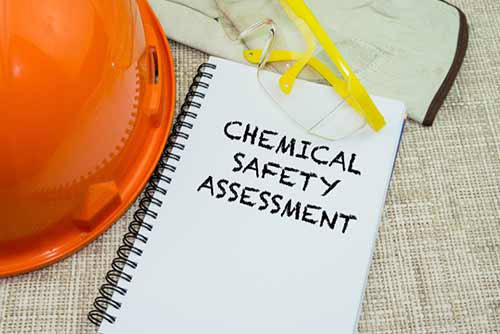How to Protect Yourself from Chemical Burns
Chemical burns are a serious threat in the workplace. A chemical burn can cause skin damage and irritation, while serious burns could have fatal consequences.
If you work in an environment where you’re at risk from a chemical burn, such as in manufacturing or construction, then it’s important to take precautions to keep yourself and others safe.
The Health and Safety at Work etc. Act 1974 sets out guidance to help employers and employees secure the health, safety and welfare of persons at work. There is a responsibility for both employers and employees to take precautions and comply with regulations, including guidance on working with chemicals.
Take a look at our guide to how to protect yourself from chemical burns so that you can help yourself and others stay safe at work.

Chemical burns – are you at risk?
Chemical burns are a risk in many workplaces. Hazardous chemicals can be found in manufacturing, health, construction, cleaning and other industries. While some workplaces pose a greater risk than others, all workplaces where chemicals are present could post a risk.
Employers are required to carry out risk assessments that identify potential threats in the workplace and put measures in place to prevent them. A COSHH risk assessment specifically outlines the hazards and risks from hazardous substances in the workplace, including chemicals.
Types of chemical burns
Chemical burns are caused by alkaline or acidic chemicals, which appear in a number of products. Understanding what is an alkali burn and how they differ from acid burns can help ensure you protect yourself and take the right action should an incident appear.
Alkali burns
Alkali burns are the most common type of chemical burn, accounting for more than two-thirds of chemical burns. They are particularly problematic for the eyes, causing many serious injuries. They can cause irreversible damage.
What is an alkali
Alkali is a soluble hydroxide found in certain compounds, including lithium, sodium and potassium. Using a litmus test, the solution would turn blue if alkali was present.
Alkali examples
Some alkali examples used in the workplace include:
Acid burns
Acid burns can have serious consequences for victims, especially where the skin and eyes are concerned. Acid burns are perhaps more widely known due to incidents of malicious acid attacks highlighted in the media.
What is an acid?
Acids contain hydrogen, so acidic substances tend to be corrosive, reacting with metal and other substances, causing severe reactions. In a litmus test, the solution would turn red if acid was present.
Acid examples
Acids are found in all kinds of everyday products, in low doses that are safe for use (like vinegar and skincare products), but are also found in:
Cleaning products
Car batteries
Fertilisers
Medicines
Advice for preventing chemical burns
Working with potentially dangerous chemicals is something many people experience on a daily basis, making stringent protective measures essential.
The majority of accidents in the workplace are caused by human error. It’s important that anyone on-site working with chemicals is given appropriate training to help prevent accidents and ensure that procedures are followed. Some of the steps employers and employees can take to protect against acid and alkali burns in the workplace include:
Make sure all chemicals and harmful substances are stored correctly and in a safe place
Chemicals should be kept in their original containers, and labelled correctly
Regular staff training should be carried out to ensure workers know how to handle chemicals correctly
How to treat acid or alkali burns
In the event of acid or alkali burns, swift action could prevent serious damage and save someone’s life. The first step should be to make the area safe and try to remove the chemical to stop it from penetrating and spreading. This may involve carefully rinsing the area with water or removing affected clothing. Gloves should be worn by the person treating the burn.
In the case of a severe burn, 999 should be called immediately. Some burns may be treatable with basic first aid, but in the event of a burn to the face, eyes, hands or groin, or on a joint, you should seek medical attention.
Protective clothing from phs Besafe
Wearing protective clothing can help employees stay safe when handling potentially dangerous chemicals. phs Besafe work with a number of key partners to provide the very best in chemical splash protective clothing
In addition to our supply services, we also provide laundry and locker services, which can help to ensure your teams always have what they need to do the job safely. We work with customers all over the UK, from a wide range of industries, to supply essential PPE.